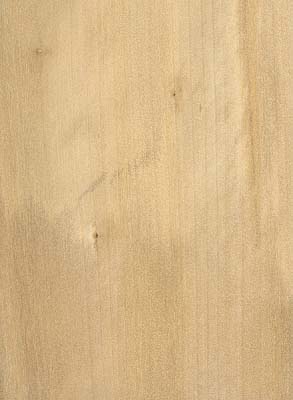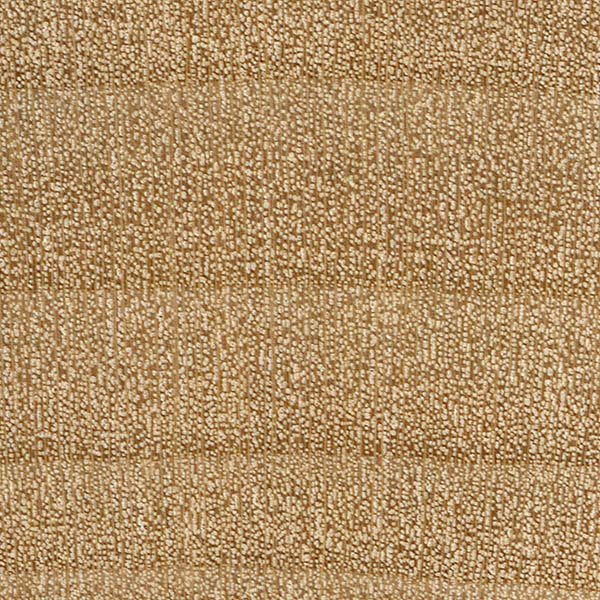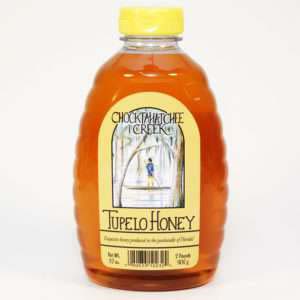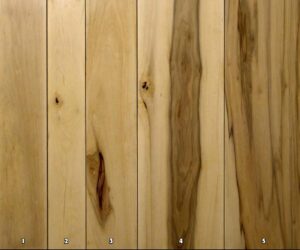Nyssa sylvatica
Summary
Black gum, or Nyssa sylvatica Marsh., has been utilized for a number of practical uses in history such as concealed parts in furniture, veneer for containers, and more. The heartwood is somewhat greenish or brownish grey, while the sapwood is white to grayish white. Black gum is low in rating for steam bending and has zero resistance to decay.
When studying the panels on the wall from left to right, Board 1 illustrates the highest quality of black gum lumber. Its grain is uniform and is clear of any defects or severe stains, except for some darkening from oxidation stain. Board 2 is lighter in color but shows knots and clusters probably caused by sprouting on the stem. Board 3 shows both holes and stain from the Columbian Timber Beetle. Board 4 is nearly quartered and shows both sapwood/heartwood color differences. Board 5 is mostly heartwood and holds more of a greyish color until finished.
History
Black gum is commonly used for concealed parts in furniture, veneer for containers, plywood, pulp, railroad ties, and lumber for boxes, crates, and pallets. When compared with the other tupelo species, the black gum trees are highly favored by honey producers for creating a light and mild-tasting honey.
Color & Texture

Black gum’s sapwood is white to grayish white, while the heartwood is somewhat greenish or brownish grey. It is a fine-textured wood due to its indistinct rays, growth rings, and pores. Black gum holds an interlocked grain which creates distinct ribbon figures on quartered surfaces.
Anatomical and Microscopy

Diffuse-porous; radial multiples of two to four pores; small to medium pores arranged in a radial pattern, numerous; parenchyma not visible with lens; narrow rays, spacing fairly close.
Wood Properties
- Workability
- Intermediate in shaping/boring, relatively low in planning/turning due to interlocked grain pattern
- Strength
- Intermediate weight and low strength
- Steam Bending
- Not particularly good for bending
- Drying
- Can be dried with relatively severe kiln schedule
- Shrinkage
- High shrinkage (close to red oak) and uses special procedures (close sticker spacing, top weight on lumber packs) to ensure flat stock during drying
- Decay
- No resistance to decay
Products
Black gum is used for concealed parts in furniture, veneer for containers, plywood, pulp, railroad ties, and lumber for boxes, crates, and pallets. It is also used commonly for carving since the wood can take finer details, hold paint better, and does not fuzz up like basswood. Tupelo honey is commonly used by beekeepers.


